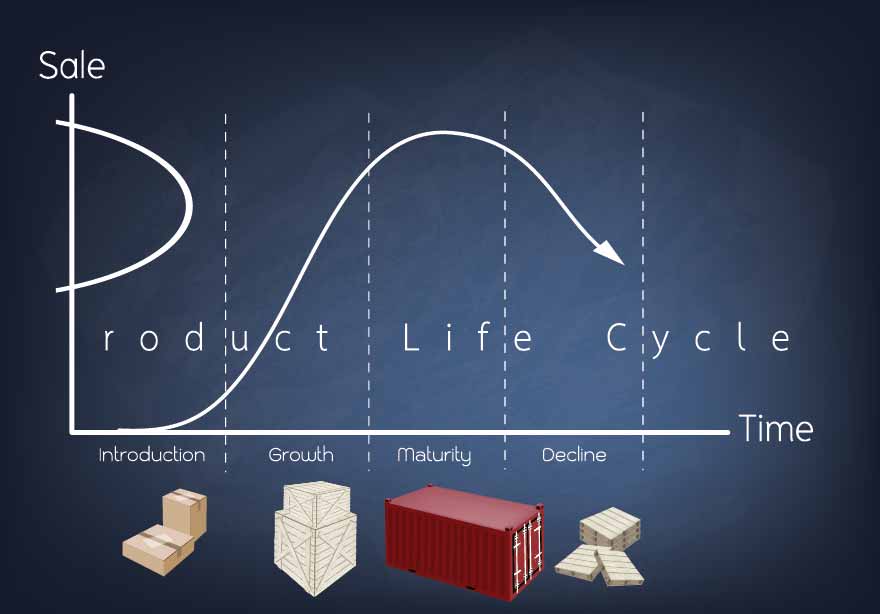Product Lifecycle Management
Windows Vista. Google Glass. New Coke. Bisleri Pop. Suzuki Kizashi…!
How many of you are still using these products?
Forget about using it, many of you may not remember some of these brands even existed!
Worldwide, companies launch hundreds of new products every year. The products range from everything we need from the time we get up till we sleep at night or even from birth to death! It could be toothpaste, a breakfast snack, beverage, mobile, software, mobile app, television, cooking-range, washing machine, automobile, and many more. Among other aspects, the success or failure of a product could be attributed to – product lifecycle management.
Product lifecycle basics
Product cycles are unique to products and the industry. In general, the term product lifecycle refers to the timeframe covers:
- Identification of a problem or a need.
- Developing the idea or concept.
- Creation of the design.
- A prototype is ready.
- Introduce the product into the market.
- Manufacture the product in bulk.
- The market accepts the product leading to its growth.
- The market demand stabilizes or reaches maturity.
- Customers lose their interest (better products are available) and the product enters the decline stage.
- The product reaches its end-of-life or disposal.
While the product lifecycle of a car like Maruti 800 was over thirty years, it could be a few months for a ‘junk snack.’

A generic product lifecycle
What does product lifecycle management involve?
Depending on the nature of the product and the industry, product lifecycle management addresses:
- Committing resources – financial, infrastructure, and people
- Safeguarding the business secrets or intellectual property associated with the product
- Keeping a close watch on market trends – technology, industry, and consumers
- Crafting and executing unbeatable sales and marketing strategies and plans
- Adapting the product strategy to reflect changes in market conditions – in an agile way
- Ensuring compliance with relevant regulatory, compliance, and environmental concerns
- Delivering a profitable product consistently
Importance of product lifecycle management
There are numerous reasons for business managers to rigorously manage a product’s lifecycle; some of the key ones are below.
- Significant financial implications
The investment needed from research & development to launch a product such as a car or an aircraft, life-saving drug, next-generation consumer durables, etc., involves millions to billions of investments spread across multiple years. A slip in the product lifecycle management could have severe financial implications for the organization, including – bankruptcy.
A poorly planned and executed product lifecycle management strategy led to the failed Tata Nano car project that hit a disastrous financial blow to the parent company.
- Staying competitive
Organizations cannot afford to relax after they taste product success. Portfolio managers and product managers must keep a close watch on competition and come up with market-beating products.
An excellent product lifecycle management strategy must ensure they keep revisiting their product for any improvements based on technology and industry trends. The success of the iPhone from 2007 till 2020 bears testimony to successful product lifecycle management.
- Industry trends
Today, no product management strategy is foolproof. Technology is disrupting products and creating new ones. Artificial intelligence, machine learning, and others are forcing shrewd portfolio and product managers to review their products regularly. They must redesign their existing products or create new ones accordingly.
- Fast-changing consumer preferences and expectations
Driven by medical advancements, the average life expectancy of people has gradually risen. The global economy has grown along with it, and the general standard of living has gone up. The improved standard of living has significantly altered the general expectations of customers in general. A case in point: while buying a new mobile phone, the conversation starts with the number of megapixels on the camera!
Dealing with such an informed and demanding customer necessitates that portfolio and product managers review their product management strategies more closely as part of the product management lifecycle.
- Organizational survival
When business leaders become arrogant or complacent, they may be blinded by what is unraveling ahead. Such an attitude has forced companies to oblivion. What else explains the disappearance of iconic brands such as Blackberry or Nokia?
If leaders are serious about their organizational survival, they have no choice but to ensure that their product management teams closely review their product lifecycle management strategies and plans.
Challenges in product lifecycle management
The challenges organizations face even today include:
- Product management continues to be isolated.
- Functional teams continue to operate as islands.
- Teams rely on their function-specific system.
- Collaboration is still on old-fashioned spreadsheets, meetings, and emails.
- Delayed and ineffective hierarchical decision-making
Successfully navigating the product lifecycle management
The survival of any organization is linked to its products/services that, in turn, is driven by rigorous product lifecycle management. Great products and excellent portfolio and product managers go together. Excellent portfolio and product managers need the support of an integrated product lifecycle management system that offers:
- A foundation of uniquely configurable processes based on industry, product category, and organizational standards.
- A platform for new idea generation
- A meticulous and comprehensive idea justification, evaluation, and approval.
- An organizational view of product fund allocation and value delivery.
- A collaborative approach to planning the product development process by integrating business functions such as business case, financials, engineering, procurement, quality, customer & vendor collaboration, and tracking value realization.
- A consolidated view of the overall project with enterprise applications such as ERPs, CRMs, Accounting, HRMS, and others.
TouchBase from ProductDossier empowers portfolio and product managers to successfully navigate the landmine of product management.





